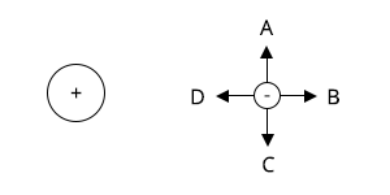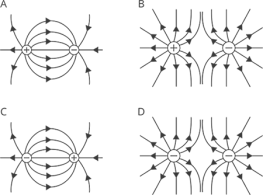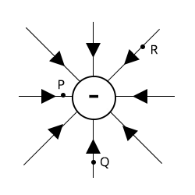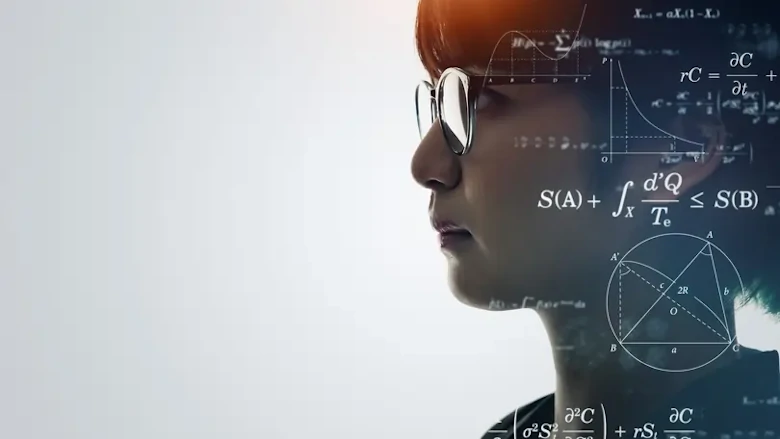Static Electricity
Static Electricity is the build-up of electric charge on the surface of objects due to friction, contact, or separation of materials. It occurs when certain materials, like insulators (materials that do not conduct electricity well), rub against each other, causing electrons to transfer from one material to another. This transfer of electrons creates an electric imbalance, with one material becoming positively charged (losing electrons) and the other becoming negatively charged (gaining electrons).
In this article, we will learn about Static Electricity also called Electrostatics. We will cover the following sub-topics:
- State that there are positive and negative charges.
- State that like charges repel and unlike charges attract.
- Describe and explain how electrostatic charging of the insulator occurs.
- Describe and explain how electrostatic charging of conductors occurs.
This article is written to meet the requirements of the students studying the Secondary 4 Physics coursework.
What are Electric Charges?
Atoms are made up of neutrons, protons, and electrons. Protons are positively charged, electrons are negatively charged and neutrons carry no charge and are neutral. All atoms are electrically neutral as they always have an equal number of protons and electrons.
If electrons are removed from an atom, the atom becomes positively charged. If electrons are added to the atom, the atom becomes negatively charged.
For Example:
Suppose there are 10 protons and 10 electrons in an atom. If 1 electron is removed, there will be 9 electrons and 10 protons in the atom. Thus, the atom will become positively charged.
However, if 1 electron is added, there will be 11 electrons and 10 protons in the atom. Thus, the atom will become negatively charged.
Can protons be added or removed?
No, protons cannot be added or removed from an atom via any chemical or physical means. Protons are found in the center of the atom which is called the nucleus.
How Do Charges Interact?
- Like charges repel – Hence, if there are two positive charges or two negative charges, they will repel each other.
- Unlike charges attract – If there are two different charges, they will attract each other.
Electric charges
The SI unit of electric charge is the Coulomb \(\text{(C)}\).
The amount of charge of an electron is
\(\displaystyle{ 1.6 × 10^{-19} \text{C} = \text{0.000 000 000 000 000 000 16 C} }\).
In \(\text{1C}\) of charge, there are \(6.25 × 10^{18}\) electrons.
To find the number of electrons:
Number of electrons\(\begin{align}\\[2ex] &= \frac{1}{1.6 \times 10^{-19}}\\[2ex] &= 6.25 \times 10^{18} \quad \text{electrons} \end{align}\)
Insulators and Conductors
Insulators are materials that inhibit the flow of charges. It means that electrons or negative charges cannot flow in an insulator.
Example: Wood, Plastic.
Conductors are materials that permit the flow of charges. It means that they allow the electrons or negative charges to flow through them.
Example: Metal.
Electrostatic charging by friction
Insulators are charged by friction. When two insulators are rubbed together, electrons are moved from one material to the other.
This results in one material having more electrons than protons and the other having less electrons than protons.
For Example:
There is a cloth with 10 protons and 10 electrons. There is also a ball with 10 protons and 10 electrons. When they are rubbed against each other, friction between the two bodies will cause electrons to move from one body to the other.

So, if 1 electron moves from the cloth to the ball, it will have 10 protons and 9 electrons. The ball will have 10 protons and 11 electrons. The cloth will be positively charged and the ball will be negatively charged.

In a system of electrostatic charges, charges are not lost. Instead, they are passed from one object to another when rubbed together.
Question 1:
An object is negatively charged because:
- It contains only electrons.
- It contains only protons.
- It contains more protons than electrons.
- It contains more electrons than protons.
Solution:
The correct answer is: D. It contains more electrons than protons.
Electrostatic Charging By Induction
Conductors are charged by induction. Induction is a method of charging in which a conductor is charged without physical contact with a charging body. Conductors cannot be charged by friction because mobile electrons can be easily transferred to and away from conductors.
Induction In Conductors
1. Two metal spheres are placed side by side, touching each other.

2. A positively charged rod is brought near but not touching the spheres. Electrons are attracted from the right sphere to the left sphere. The left sphere has an excess of negative charges while the right sphere has an excess of positive charges.

3. The spheres are separated.

4. The charged rod is removed. The charges redistribute themselves.

Induction In One Conductor
1. A positively charged rod is brought near, but not touching a metal conductor. Electrons in the conductor are drawn towards the end near the positively charged rod.

2. The conductor is earthed. Electrons move from the earth to the conductor.

3. With the charged rod still in place, the earth wire is removed.

4. The charged rod is removed. Electrons in the conductor redistribute throughout the conductor. The conductor is now negatively charged.

Electrostatic Charging By Contact

A positively charged rod is brought into contact with the sphere. The electrons of the sphere will flow to the positively charged rod. The electrons will only flow if the rod is a conductor.
In electrostatic charging by contact, the same charge is induced. However, in electrostatic charging by induction, an opposite charge is induced.
What is the disadvantage of electrostatic charging by contact?
If the charged rod is used on several conductors, it will ultimately lose its charge.
Neutralisation Of Charged Material
How do we neutralise or discharge charged materials?
A charged object can be neutralised by discharging the excess charges on it.
The charged object can be discharged in two ways:
- Heating: Heating ionises the air around the charged object. There are both positive and negative ions around heating flames. If the charged object is positively charged, the negative ions will be attracted to the charged object to neutralise the positive charges. If the object is negatively charged, the positive ions will be attracted to the charged object to neutralise the negative charges. Insulators can be discharged by heating.
- Earthing: In earthing, a wire is connected to the charged object to neutralise. Conductors are discharged by earthing.
Question 2:
Two insulated uncharged metal spheres, A and B, are touching each other. A negatively charged rod is placed near sphere A and sphere A becomes positively charged.

What will the charge on B be?
- Negative, but smaller in magnitude than that on sphere A.
- Negative, but equal in magnitude to that on sphere A.
- Positive, but smaller in magnitude than that on sphere A.
- Positive, but equal in magnitude to that on sphere A.
Solution:
B. Negative, but equal in magnitude to that on sphere A.
Conclusion
In this article, we learned about positive and negative electric charges and how the charges interact. We also looked at how electrostatic charging is done in insulators and conductors. The details covered in the article are aimed at helping students study Physics as per the Secondary 4 grade.
| Continue Learning | |
|---|---|
| Electromagnetic Spectrum | Sound |
| Static Electricity | D.C. Circuits |
| Electromagnetic Induction | Electromagnetism |
| Magnetism | Current Electricity |
| Practical Electricity | |
Test Yourself
An electron is placed near a positive charge as seen below. In which direction will the electron move?

Unlike charges will be attracted to each other. The electron will move towards the positive charge.
Ans: (D)
Two charges Q1 and Q2 are as shown below.

It is known that they started moving towards each other when released from rest. Which of the following is correct?
A. Magnitude of Q1 is greater than that of Q2.
B. Q1 and Q2 must be of like charges.
C. Q1 and Q2 must be of unlike charges.
D. Q1 should be positively charged.
As the charges started moving towards each other, this means charges must be unlike charges.
Ans: (C) Q1 and Q2 must be of unlike charges.
Which diagram shows the electric field pattern between two charged spheres?

The electric field lines should points radially out from a positively charge object and radially in from a negatively charge object. The electric field lines of the negatively charge object points radially outwards in B which is incorrect.
B is incorrect. The electric field lines of the negatively charge object points radially outwards in C and D which is incorrect. C and D are incorrect.
Ans: (A)
What happens when a small positive charge of static electricity is placed in an electric field?
A: A force is produced on the charge.
B: It will be repelled due to the unlike charges.
C: It will be attracted due to the like charges.
D: Discharge may occur in the electric field.
Definition of an electric field: An electric field is a region in which an electric charge experiences an electric force.
The diagram shows the electric field lines of a point negative charge.

Which of the following is true regarding the strength of the electric field?
The strength of an electric field is indicated by how close the field lines are to one another. At point P, the lines are closest to one another, thus the field strength at P is the greatest.
Ans: (A) It is the greatest at point P.




 SG
SG  VN
VN 















